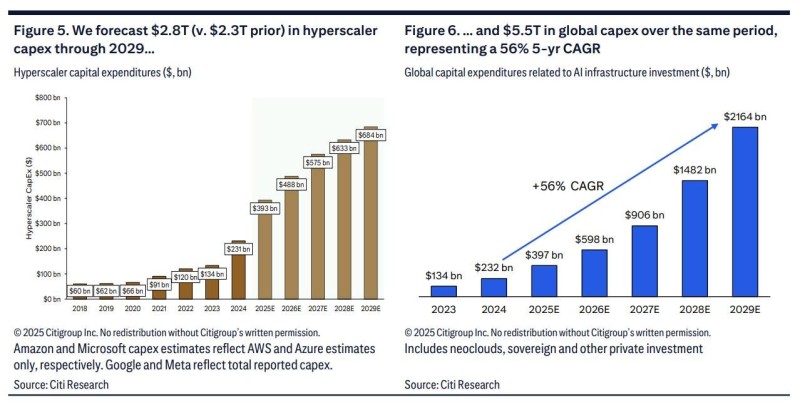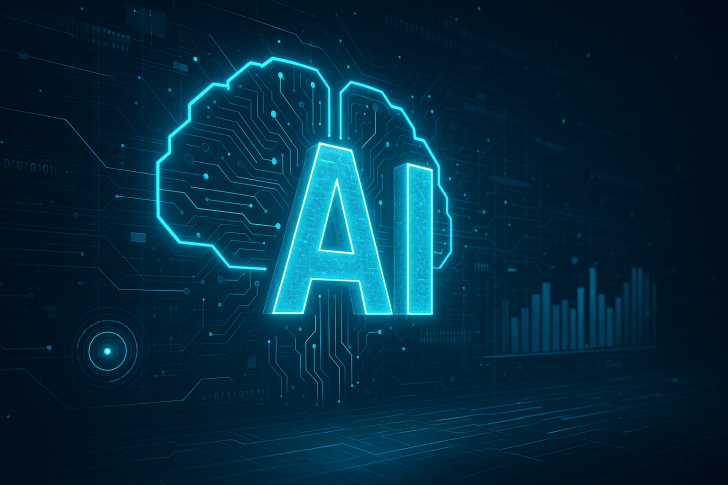Artificial intelligence has entered an investment supercycle. Citi Research recently upgraded its forecast for AI-related capital expenditures, revealing unprecedented growth across cloud hyperscalers and global infrastructure.
Key Highlights
According to projections shared by The_AI_Investor, cumulative hyperscaler capex is now expected to hit $2.8 trillion through 2029, up from the previous $2.3 trillion estimate. Global AI-related capex is forecast at $5.5 trillion total, with 2029 alone projected to account for $2.164 trillion.

- Hyperscaler spending surge: Led by Amazon (AWS), Microsoft (Azure), Google, and Meta, hyperscaler capex will jump from $231 billion in 2024 to $684 billion by 2029, driven by both AI training demands and the expansion of inference workloads as generative AI scales worldwide.
- Nvidia's central role: Nvidia remains at the heart of this multi-trillion-dollar cycle. With GPUs still essential for AI training and deployment, hyperscalers are competing aggressively for supply, cementing Nvidia's market dominance and explaining its position as one of the biggest winners in the AI rally.
- 56% CAGR reflects supercycle dynamics: Citi projects global AI infrastructure spending to grow at a 56% compound annual rate from 2023 through 2029. This kind of rapid, sustained growth is historically rare and positions AI as the defining investment driver of the decade. The capital isn't just coming from hyperscalers—sovereign wealth funds, private companies, and emerging "neocloud" players are also pouring billions into AI infrastructure.
Outlook
Citi's revised numbers confirm what many suspected: AI has moved from hype to a structural global investment trend. With $5.5 trillion in total capex and record outlays expected by 2029, the sector is entering a supercycle that will reshape entire industries. For investors, the message is simple—follow the capex. From semiconductor giants like Nvidia to hyperscalers and data center operators, the companies building this infrastructure are positioned to be the prime beneficiaries of AI's trillion-dollar decade.
 Peter Smith
Peter Smith

 Peter Smith
Peter Smith


